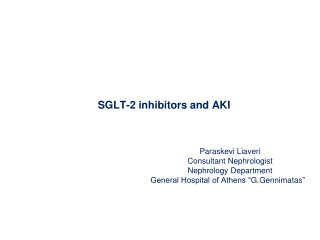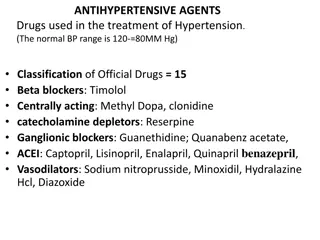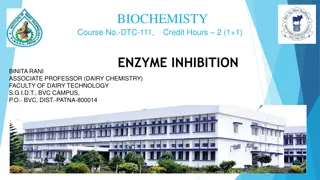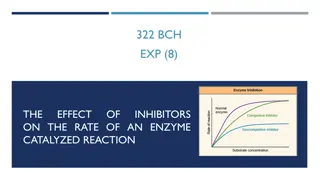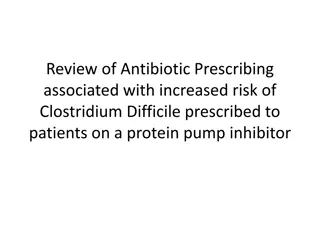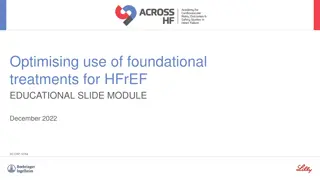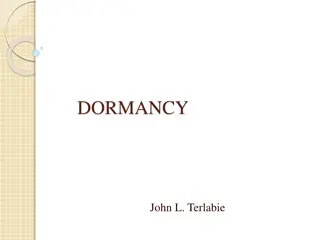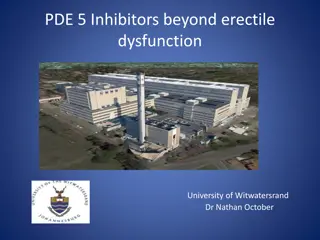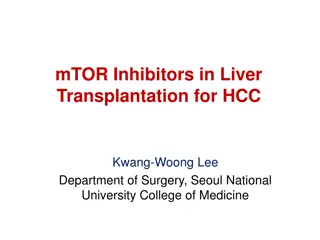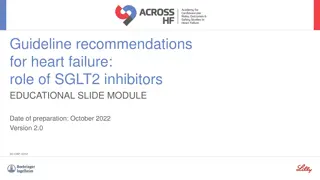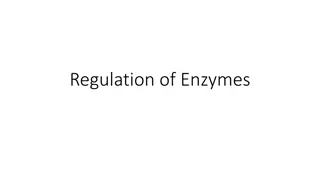Update on BTK Inhibitors for MCL, Amin SULAIMAN, Heamatology, EHA2023 Hybrid Congress
Highlights from the EHA2023 Hybrid Congress discussing the latest updates on BTK inhibitors for Mantle Cell Lymphoma (MCL) presented by Amin SULAIMAN. The phase II IMCL-2015 GELTAMO trial's 5-year update on first-line Ibrutinib with Rituximab for indolent MCL is detailed, along with baseline characteristics and pathology features.
Download Presentation

Please find below an Image/Link to download the presentation.
The content on the website is provided AS IS for your information and personal use only. It may not be sold, licensed, or shared on other websites without obtaining consent from the author.If you encounter any issues during the download, it is possible that the publisher has removed the file from their server.
You are allowed to download the files provided on this website for personal or commercial use, subject to the condition that they are used lawfully. All files are the property of their respective owners.
The content on the website is provided AS IS for your information and personal use only. It may not be sold, licensed, or shared on other websites without obtaining consent from the author.
E N D
Presentation Transcript
Updates on BTK Inhibitors for MCL Pr, Amin SULAIMAN Heamatology, Faculty of medicine CCO Independent Conference Coverage* of the EHA2023 Hybrid Congress, International Conference on Malignant Lymphoma in Lugano, Society of Hematologic Oncology Eleventh Annual Meeting, Provided by Clinical Care Options, LLC Supported by an educational grant from Lilly.
Phase II IMCL-2015 GELTAMO: 5-Yr Update of First-line Ibrutinib + Rituximab for Indolent MCL Multicenter, single-arm, open-label phase II trial Monitoring by MRD studies and CT scans every 6 mo Patients with previously untreated indolent forms of MCL (asymptomatic, nonblastoid variants, Ki-67 <30%; leukemic nonnodal and nodal subtypes permitted with lymph nodes <3 cm) and stable disease for 3 mo (N = 50) Rituximab 375 mg/m2 IV x 8 (Days 1, 8, 15, 22 of cycle 1; Day 1 of cycles 3, 5, 7, 9)* Ibrutinib 560 mg PO QD until PD, toxicity, or sustained undetectable MRD for 6 mo after 2 yr treatment (cycle 24) *1 cycle = 28 days Primary endpoint: CR rate after 12 cycles per Lugano criteria Median follow-up: 59 mo (range: 37-81) *Data cutoff March 15, 2023 Slide credit: clinicaloptions.com Gin . ICML 2023. Abstr 098. Gin . JCO. 2022;40:1196.
IMCL-2015 GELTAMO: Baseline Characteristics Characteristic N = 50 Characteristic N = 50 Median age, yr (range) 65 (40-85) Median spleen size, cm (range) 13 (9-29) Male, n (%) 33 (69) Lymph node size (central review PET/CT) Ann Arbor Stage III-IV, n % 47 (94) No enlarged/FDG uptake, n (%) 11 (22) Median leukocyte count, x 109/L) (range) 12.2 (3.7-126) Median longest diameter, mm (range) 21 (13-43) LDH > ULN, n (%) 4 (8) Median time of pretreatment observation, mo (range) 7.7 (3-107) 2-microglobulin > ULN, n (%) MIPI risk, n (%) 22 (49) Low 12 (24) Intermediate 19 (38) High 19 (38) Data cutoff: March 20, 2023 Median follow-up: 59 mo (range: 37-81) Slide credit: clinicaloptions.com Gin . ICML 2023. Abstr 098.
IMCL-2015 GELTAMO: Baseline Pathology, Genetic, and Molecular Features Characteristic, n (%) Patients* Characteristic, n (%) Patients Cytology Genetics and molecular analysis Small cell/classical 19 (39)/30 (61) t(11;14)(q13;q32) 37 (95) Cyclin D1 expression Cryptic CCND1 rearrangement 1 (2.5) 48 (98)/1 (2) CCND2 rearrangement Positive/negative 1 (2.5) SOX11 expression CNA >5 (n = 40) 15 (38) Positive/negative 30 (62)/18 (38) TP53 mutations (n = 41) 6 (15) MCL profile (n = 43) Ki-67 (n = 44) Low (<30%)/high ( 30%) 43 (96)/2 (4) Nonnodal 18 (42) TP53 expression (n = 30) Conventional 25 (58) Positive/negative 0/30 (100) *Samples: BM (n = 29), LN (n = 17), tonsil (n = 2), other (n = 2). One patient had insufficient sample for MCL confirmation. One patient had CCND2 translocation and overexpression. Molecular variant assigned with 2 techniques (L-MCL-16, epigenetic COO, IGVH and SOX11 IHC). One additional unclassifiable case. Data cutoff: March 20, 2023 Slide credit: clinicaloptions.com Gin . ICML 2023. Abstr 098.
IMCL-2015 GELTAMO: Long-term Safety (Select Events) Outcome N = 50 Cardiovascular Events N = 50 Ibrutinib dose reduction, n (%) 6 (12) Hypertension, n (%) 10 (20) Ibrutinib discontinuation for AEs,* n (%) 13 (26) Ibrutinib related 5 (10) Ibrutinib discontinuation for drug- related AEs, n (%) Atrial fibrillation or flutter (n = 1 with ibrutinib), n (%) 7 (14) 4 (8) Infections grade 3, n 4 Fibrillation, n 3 COVID-19 (n = 1 with ibrutinib) 2 Flutter, n 1 Sepsis 1 Cardiac tamponade (ibrutinib + edoxaban), n 1 Recurrent infections 1 Ischemic stroke, n 2 *Drug intolerance (n = 5), cardiac tamponade, recurrent infections, severe anaplastic anemia, vertebral fractures, pancreatic adenocarcinoma, ischemic stroke, COVID-19 infection, pleural effusion. Pulmonary embolism, n 1 Myocardial infarction, n 1 5 cases of second malignancies: pancreatic adenocarcinoma (on ibrutinib), bladder adenocarcinoma and basocellular, prostate adenocarcinoma, lung adenocarcinoma, tonsil squamous cell carcinoma Slide credit: clinicaloptions.com Gin . ICML 2023. Abstr 098.
IMCL-2015 GELTAMO: Response Rates and Undetectable MRD Cycle 12 Outcome N = 50 Cycle 24 Outcome N = 50 Evaluable for centralized response after Cycle 12, n Evaluable for response by local investigator after Cycle 24, n 46 44 2 Discontinued early, n 4* Discontinued between Cycle 12 and 24, n Cycle 12 response Cycle 24 response ORR, n (%) 42 (84) ORR, n (%) 42 (84) CR 40 (80) CR 41 (82) PR 2 (4) PR 1 (2) <PR 4 (8) <PR 2 (4) Undetectable MRD in PB (n = 46), n (%) Undetectable MRD in PB (n = 44), n (%) 40 (87) 35 (80) *Aplastic anemia (n = 1), fractures (n = 1), intolerance (n = 2). Progression (n = 1), neoplasia (n = 1). 41 patients reached MRD negativity during follow-up, at 4.5-18.4 months; however, 5 patients remained MRD positive at data cut-off Euro MRD detected at 10-5 sensitivity using ASO-qPCR (n = 33) or NGS (n = 17). Slide credit: clinicaloptions.com Gin . ICML 2023. Abstr 098.
IMCL-2015 GELTAMO: MRD Outcomes Median treatment duration: 29 mo (range: 1.7-63+) 32/50 (64%) patients discontinued ibrutinib for undetectable MRD at cycle 24 MRD became detectable: n = 12; disease progression: n = 6; died with undetectable MRD: n = 1 12/50 (24%) patients continued ibrutinib for detectable MRD at cycle 24 6 discontinued ibrutinib: disease progression (n = 2), COVID-19 (n = 1), ischemic stroke (n = 1), pericardial tamponade (n = 1), pleural effusion (n = 1) At median follow-up of 59 mo: 9 patients had MCL progression 7 patients died: disease progression (n = 3), pancreatic adenocarcinoma (n = 1), SARS-CoV-2 (n = 1), vertebral fractures (n = 1), unknown with undetectable MRD (n = 1) Slide credit: clinicaloptions.com Gin . ICML 2023. Abstr 098.
IMCL-2015 GELTAMO: Duration of Response With Undetectable MRD 41 patients reached undetectable MRD at 4.5-18.4 mo DoR From First Undetectable MRD (n = 41) 1.0 Median DoR clinical (n = 41): 67.3 mo (95% CI: 66-68) DoR From Frist MRD (-) 0.8 Median DoR MRD (n = 41): 60.7 mo (95% CI: 38-83) 0.6 0.4 Median time from MRD conversion (undetectable to detectable) to clinical progression (n = 8): 20 mo (6.5-35.5) 0.2 DoR clinical DoR MRD 0 0 12 24 36 48 60 72 84 Mo From First MRD(-) No. at Risk DoR clinical DoR MRD 41 41 41 40 40 34 32 26 21 14 9 7 3 3 0 0 Gin . ICML 2023. Abstr 098. Reproduced with permission. Slide credit: clinicaloptions.com
IMCL-2015 GELTAMO: Duration of Response From Cycle 24 by MRD Status and Ibrutinib Discontinuation DoR From Cycle 24 Evaluation (n = 44) Median DoR: not yet reached 1.0 P = .1379 0.8 DoR From Cycle 24 0.6 Ibrutinib ongoing 0.4 Detectable MRD ibrutinib ongoing (n = 12) (progression: n = 2; continued ibrutinib: n = 6) 0.2 Undetectable MRD ibrutinib discontinued (n = 32) (progression: n = 6; continued undetectable MRD: n = 20) 0 0 12 24 36 48 60 Mo From Cycle 24 Patients at Risk, n DoR clinical DoR MRD 12 32 11 32 5 2 0 5 0 0 26 17 Slide credit: clinicaloptions.com Gin . ICML 2023. Abstr 098. Reproduced with permission.
IMCL-2015 GELTAMO: Survival Outcomes Survival 1.0 0.8 Median PFS: 72 mo (95% CI: 66-79) Probability 0.6 0.4 OS PFS EFS 5-yr OS: 86% (95% CI: 75-97) 0.2 0 5-yr PFS: 80% (95% CI: 66-93) 0 12 24 36 48 60 72 84 Patients at Risk, n Mo 5-yr EFS: 65% (95% CI: 50-79) 50 50 50 46 46 46 46 45 41 44 44 39 31 30 27 19 18 16 7 6 5 0 0 0 OS PFS EFS Slide credit: clinicaloptions.com Gin . ICML 2023. Abstr 098. Reproduced with permission.
IMCL-2015 GELTAMO: Risk Factors for PFS High-risk MIPI and TP53 were independent predictors of PFS by multivariate analysis, HR: 8.9 (P = .05) and HR: 8.9 (P = .01), respectively 1.0 1.0 TP53 P <.0001 MIPI P = .002 0.8 0.6 0.8 0.6 PFS PFS MIPI low risk MIPI intermediate risk MIPI high risk 0.4 0.2 0.4 0.2 TP53 wt TP53 mut 0 0 0 12 24 36 48 60 72 84 0 12 24 36 48 60 72 84 Mo Mo No. at risk: TP53 wt TP53 mut Patients at Risk, n MIPI low risk MIPI intermediate risk MIPI high risk 35 6 34 5 34 5 34 5 24 2 15 1 5 0 0 0 12 19 19 11 18 17 11 18 16 11 18 15 7 5 8 5 2 3 1 0 0 0 15 8 1.0 1.0 CNA P = .014 Molecular subtype P = .048 0.8 0.6 0.8 0.6 PFS PFS 0.4 0.2 0.4 0.2 cMCL nnMCL CAN (0-5) CAN (5+) 0 0 0 12 24 36 48 60 72 84 0 12 24 36 48 60 72 84 Mo Mo Patients at Risk, n CNA (0-5) Patients at Risk, n cMCL nnMCL 25 15 22 14 25 13 25 13 18 7 11 4 4 1 0 0 25 18 22 18 22 17 22 17 15 13 10 8 2 4 0 0 CNA (5+) Slide credit: clinicaloptions.com Gin . ICML 2023. Abstr 098. Reproduced with permission.
First-line Acalabrutinib + Rituximab in Older Patients With MCL Investigator-initiated, single-center, single-arm phase II trial Responses evaluated every 3 cycles (initial response after 12 wk) Older (aged 65 yr) patients with previously untreated MCL; PS 2, normal organ function; cardiology clearance prior to study start (N = 50) Rituximab 375 mg/m2 IV weekly for 1 mo, then once per mo for 12 mo, then once every 2 mo up to total of 24 mo Acalabrutinib 100 mg PO BID until PD or other reason for discontinuation Primary objective: ORR, CR (confirmation by PET/CT scan and/or BM biopsy/aspiration and/or endoscopies), and safety Secondary Objectives : PFS, OS, and MRD Slide credit: clinicaloptions.com Jain. ICML 2023. Abstr 099.
First-line Acalabrutinib + Rituximab in Older Patients With MCL: Baseline Characteristics Characteristic N = 50 Characteristic N = 50 Median age, yr (range) 69 (65-81) Blastoid or pleomorphic, n (%) Blastoid, n Pleomorphic, n 4 (8) Male, n (%) 36 (72) 3 Bone marrow involvement, n (%) 45 (90) 1 GI involvement, n/N (%) 35/47 (75) TP53 aberrant, n/N (%)* 12/43 (28) SOX-11 positive, n/N (%) Ki-67 <30% Ki-67 <50% Ki-67 30% Ki-67 50% sMIPI risk, n (%) Low Intermediate High 39/48 (81) 29/42 (69) 4 (8) 35 (70) 38/42 (90) 11 (22) 13/42 (31) 4/42 (10) Serum LDH > ULN, n (%) 22 (44) *Mutations only, FISH negative (n = 6); mutations, FISH positive (n = 4); FISH positive only (n = 2). 12 patients with leukemic phase (7 negative and 5 positive). Slide credit: clinicaloptions.com Jain. ICML 2023. Abstr 099.
First-line Acalabrutinib + Rituximab in Older Patients With MCL: Response 1 patient had SD: BM cleared but developed RASopathy/CMML Patients Response (ITT) (N = 50) 49 Wk 12 best response,* evaluable patients, n ORR, n/N (%) CR, n/N (%) PR, n/N (%) 46/50 (92) 3 patients died: 1 primary refractory, 1 unknown in CR, 1 off study RAS/CMML 37/50 (74) 9/50 (18) Best response , evaluable patients, n 49 ORR, n/N (%) 46/50 (92) CR, n/N (%) 46/50 (92) MRD negative at LFU, n/N (%) 19/32 (60) Median acalabrutinib + rituximab cycles to reach CR, n (range) 3 (2-7) *Wk 12 best response without ITT: ORR/CR, 94%/76%; ORR/CR with PET/CT scan alone, 93%/78%. 1 patient discontinued treatment within first 3 cycles for grade 3 AEs and 3 patients were nonresponders. Best response without ITT: ORR/CR, 94%/94%. 13/32 were MRD negative (all CMR). Slide credit: clinicaloptions.com Jain. ICML 2023. Abstr 099.
First-line Acalabrutinib + Rituximab in Older Patients With MCL: Survival PFS OS 100 100 Probability of Survival 80 80 Median OS: NR and 25 mo Median PFS: NR and 24 mo PFS (%) 60 60 Deaths/Total Progression/Total 40 40 Ki67 <30% 1/29 Ki67 30% 2/13 Ki67 <30% 1/29 Ki67 30% 3/13 20 20 P = .27 P = .09 0 0 0 3 6 9 12 Mo 15 18 21 24 0 3 6 9 12 Mo 15 18 21 24 2-yr PFS: 92% 2-yr OS: 96% Median follow-up: 17 mo Jain. ICML 2023. Abstr 099. Reproduced with permission. Slide credit: clinicaloptions.com
First-line Acalabrutinib + Rituximab in Older Patients With MCL: AEs and Patient Disposition 10/50 patients discontinued study N = 50 AE, n (%) Grade 1/2 Grade 3/4 3 for disease progression/ transformation at 2, 3, and 16 mo after treatment start Hematologic Neutropenia Thrombocytopenia Anemia 2 (4) 1 (2) 4 (8) 2 (4) 1 by patient choice (logistics) 9 (18) 1 (2) Nonhematologic Fatigue Myalgia Headache Bruising Atrial fibrillation COVID-19 *Patient had past medical history of VT before study treatment. 4 for AEs: recurrent syncope, multiple intolerance, neuropathy, melanoma recurrence, atrial fibrillation* 39 (78) 2 (4) 31 (62) 1 (2) 17 (34) 2 (4) 14 (28) -- 1 for RAS/CMML 1 (2) -- 1 unknown 16 (32) 2 (4) Slide credit: clinicaloptions.com Jain. ICML 2023. Abstr 099.
BRUIN: Updated Results and Subgroup Analysis With Pirtobrutinib for Previously Treated MCL Dose-escalation and dose-expansion phase I/II study in patients with previously treated CLL/SLL, MCL, or other B-cell malignancies Pirtobrutinib Phase I: 25-300 mg QD Phase II: 200 mg QD 28-day cycles Patients 18 yr of age with previously treated MCL; active disease in need of treatment; ECOG PS 0-2 (N = 166) Primary endpoint: ORR (phase II) Primary analysis set (n = 90) included patients who enrolled on phase I or II, had measurable disease, received prior cBTKi-containing regimen, and were without known CNS involvement Slide credit: clinicaloptions.com Cheah. ICML 2023. Abstr 102. NCT03740529. Wang. SOHO 2023. Abstr MCL-155.
BRUIN MCL: Baseline Characteristics Prior cBTKi (n = 90) cBTKi Naive (n = 14) Prior cBTKi (n = 90) cBTKi Naive (n = 14) Characteristic Characteristic, n (%) Median age, yr (range) 70.0 (46-87) 67 (60-86) Prior therapy BTKi Anti-CD20 antibody Chemotherapy Immunomodulator SCT Autologous SCT Allogeneic SCT BCL2 inhibitor CAR T-cell therapy PI3K inhibitor 90 (100) 86 (95.6) 79 (87.8) 19 (21.1) 19 (21.1) 17 (18.9) 4 (4.4) 14 (15.6) 4 (4.4) 3 (3.3) 0 Male, n (%) 72 (80.0) 10 (71.4) 14 (100.0) 14 (100.0) 1 (7.1) 7 (50.0) 7 (50.0) 0 0 0 1 (7.1) Histology, n (%) Classic Pleomorphic/blastoid 70 (77.8) 20 (22.0) 11 (78.6) 3 (21.4) ECOG PS 0/1/2, % 67.8/31.1/1.1 35.7/57.1/7.1 sMIPI score, n (%) Low risk (0-3) Intermediate risk (4-5) High risk (6-11) 20 (22.2) 50 (55.6) 20 (22.2) 3 (21.4) 5 (35.7) 6 (42.9) Reason for discontinuing prior BTKi PD Toxicity/other Tumor bulk <5 cm*/ 5 cm, % 73.3/26.7 64.3/35.7 74 (82.2) 16 (17.8) -- -- Bone marrow involvement, n (%) Yes No 46 (51.1) 44 (48.9) 4 (28.6) 10 (71.4) TP53 status Positive Negative 17 (18.9) 19 (21.1) 3 (21.4) 4 (28.5) Median prior lines of systemic therapy, n (range) 3 (1-8) 2 (1-3) Ki-67 index <30% 30% 9(10.0) 25 (27.8) 2 (14.3) 6 (42.9) *<5 cm includes 7 patients treated with prior cBTKi and 1 patient who was cBTKi naive without a measurable lymph node. Data cutoff: July 29, 2022 Slide credit: clinicaloptions.com Cheah. ICML 2023. Abstr 102. Wang. SOHO 2023. Abstr MCL-155
BRUIN MCL: Response BTKi-Pretreated MCL n = 90 * 100 ORR, % (95% CI) 56.7 (45.8-67.1) Prior cBTKi cBTKi naive Best response,* n (%) CR PR SD PD 75 % Change in SPD From Baseline 17 (18.9) 50 34 (37.8) 25 16 (17.8) 14 (15.6) 0 -25 BTKi-Naive MCL n = 14 ORR, % (95% CI) Best response, n (%) CR PR SD PD 85.7 (57.2-98.2) -50 -75 6 (42.9) -100 6 (42.9) ORR was maintained in high-risk patients, including those with blastoid/pleomorphic variants, elevated Ki-67, and TP53 status 0 1 (7.1) *9 patients not evaluable. 1 patient not evaluable. Data cutoff: July 29, 2022 *Patients with >100% increase in SPD. Slide credit: clinicaloptions.com Cheah. ICML 2023. Abstr 102. Wang. SOHO 2023. Abstr MCL-155. Reproduced with permission.
BRUIN: DoR, PFS, and OS in Pretreated Patients With MCL per IRC Assessment PFS 100 Median PFS: 7.4 mo (95% CI: 5.3-13.3) Median follow-up: 13.8 mo Censored: n = 40 (44%) 80 DoR 100 Median DoR: 17.6 mo (95% CI: 7.3-27.2) Median follow-up: 12.7 mo Censored: n = 28 (55%) 60 PFS (%) 51.7% 75.0% 80 39.4% 40 34.6% DoR (%) 58.0% 60 20 44.6% 40 0 0 2 4 6 8 10 12 14 16 18 20 22 24 26 28 3032 34 36 38 40 Mo Patients at Risk, n 90 61 44 31 27 21 20 14 13 12 9 100 84.7% 20 9 8 8 5 3 2 1 1 1 0 OS 0 0 2 4 6 8 10 12 14 16 18 20 22 24 26 28 30 32 34 Mo 21 19 16 13 12 10 9 80 Patients at Risk, n 69.1% 51 38 30 27 8 7 4 2 1 1 0 59.0% 60 OS (%) Median DoR, PFS, and OS not reached in cBTKi-naive cohort 40 Median OS: 23.5 mo (95% CI: 15.9-NE) Median follow-up: 23.5 mo Censored: n = 53 (59%) 18-mo DoR: 100% (95% CI: 100%) 20 18-mo PFS: 92.3% (95% CI: 56.6%-98.9%) 0 0 2 4 6 8 10 12 14 16 18 20 22 24 26 28 3032 34 36 38 40 42 Mo Patients at Risk, n 90 78 72 67 64 55 52 48 39 31 28 25 20 16 11 6 18-mo OS: 92.3% (95% CI: 56.6%-98.9%) 6 2 2 2 1 0 Data cutoff: July 29, 2022 Slide credit: clinicaloptions.com Cheah. ICML 2023. Abstr 102. Wang. SOHO 2023. Abstr MCL-155. Reproduced with permission.
BRUIN: DoR, PFS, and OS in High-Risk MCL Subgroups per IRC Assessment DoR by Ki-67 Index DoR by TP53 status 100 100 80 80 66.7% 66.7% 62.5% 62.5% 64.3% 60 60 62.3% DoR (%) DoR (%) 53.6% 53.6% 51.9% 40 40 41.6% 20 20 22.2% 0 0 0 2 4 6 8 10 12 14 16 18 20 22 24 26 28 30 32 34 Mo 4 4 3 3 3 1 1 0 2 4 6 8 10 12 14 16 18 20 22 24 26 28 30 32 34 Mo 5 5 5 5 4 4 3 Patients at Risk, n Ki-67 <30% Ki-67 30% Patients at Risk, n 6 5 4 4 1 0 0 0 0 0 0 11 9 7 6 2 1 1 1 1 1 0 TP53 Negative TP53 Positive 14 9 7 6 5 5 5 4 4 4 3 2 2 2 1 1 1 0 8 5 3 3 3 3 3 2 2 0 0 0 0 0 0 0 0 0 Median DoR Mo (95% CI) Median PFS Mo (95% CI) Median OS Mo (95% CI) Median DoR Mo (95% CI) Median PFS Mo (95% CI) Median OS Mo (95% CI) Parameter TP53 Status Ki-67 <30% 17.6 (1.6-NE) 19.5 (0.9-NE) NE (6.9-NE) Negative 14.8 (1.9-NE) 7.4 (3.8-23.4) NE (6.9-NE) Ki-67 30% 21.6 (1.7-NE) 5.2 (1.9-23.4) NE (14.7-NE) Positive 17.6 (1.7-NE) 5.2 (1.7-19.5) NE (8.3-NE) Data cutoff: July 29, 2022. Slide credit: clinicaloptions.com Cheah. ICML 2023. Abstr 102. Wang. SOHO 2023. Abstr MCL-155 . Reproduced with permission.
BRUIN: Safety in MCL n = 166 TEAEs in in 15% TRAEs AE, % Any Grade Grade 3 Any Grade Grade 3 Fatigue 31.3 3.0 21.1 2.4 Diarrhea 22.3 0 12.0 0.0 Neutropenia 16.3 1.2 9.0 0.6 AEs of special interest, % Bruising 16.3 0 11.4 0 Rash 8.4 0.6 5.4 0 Arthralgia 9.0 1.2 2.4 0 Hemorrhage/hematoma 10.2 2.4 4.2 0.6 Hypertension 3.6 0 1.8 0 AF/flutter 3.6 1.8 0.6 0 Median time on treatment: 5 mo Discontinuations due to TRAEs: 3% (n = 5) Dose reductions due to TRAEs: 6% (n = 10) Data cutoff: July 29, 2022 Slide credit: clinicaloptions.com Cheah. ICML 2023. Abstr 102. Wang. SOHO 2023. Abstr MCL-155.
ViPOR: Venetoclax, Ibrutinib, Prednisone, Obinutuzumab, Lenalidomide for R/R and TN MCL NEW Ongoing phase Ib/II study Obinutuzumab 1000 mg IV D1-2 Prednisone 100 mg PO QD D1-7 Ibrutinib 560 mg QD D1-14 Lenalidomide 15 mg PO QD D1-14 Venetoclax per dose escalation D2-14* Pegfilgrastim 6 mg SC D8 Cycles 1-6 Q21D R/R and TN MCL with adequate organ function; 1 prior rituximab- containing regimen required (patients with R/R disease) (N = 26) All patients received PCP and G-CSF prophylaxis; VTE prophylaxis per investigator. *Starting with cycle 2; all patients admitted for 12-day ramp-up with TLS prophylaxis/monitoring. Phase I (R/R MCL): 3+3 design to determine MTD of 2 DLs of dose-escalated venetoclax (200 and 400 mg) with fixed doses of ibrutinib, prednisone, obinutuzumab, lenalidomide Phase II (R/R and TN MCL): dose expansion cohorts at MTD Slide credit: clinicaloptions.com Lakhotia. SOHO 2023. Abstr MCL-349.
ViPOR: Baseline Characteristics R/R MCL (n = 12) TN MCL (n = 14) All MCL (n = 26) R/R MCL (n = 12) TN MCL (n = 14) All MCL (n = 26) Characteristic, n (%) Characteristic, n (%) Prior therapy Rituximab Anthracycline Bendamustine BTKi ASCT CAR-T Median age, yr (range) 71 (57-79) 66 (41-82) 67 (41-82) 12 (100) 6 (50) 6 (50) 5 (42) 3 (25) 1 (8) Male 8 (67) 11 (79) 19 (73) Simplified MIPI Low risk (0-3) Standard risk (4-5) High risk (6-11) 1 (8) 7 (58) 4 (33) 7 (50) 4 (29) 3 (21) 8 (31) 11 (42) 7 (27) Ki-67 30% 5 (42) 5 (36) 10 (38) MCL35 risk (n = 20) Low Intermediate High 2 (25) 5 (63) 1 (13) 5 (42) 5 (42) 2 (17) 7 (35) 10 (50) 3 (15) TP53 IHC 50% 3 (25) 1 (7) 4 (15) TP53 mutation (n = 21) 4 (50) 2 (15) 6 (29) Prior tx, median (range) 3 (1-4) Stage IV disease BM involvement EN involvement Both 11 (92) 9 (75) 10 (83) 8 (67) 14 (100) 14 (100) 13 (93) 13 (93) 25 (96) 23 (88) 23 (88) 21 (81) Refractory to last tx 8 (67) 2 (17) 5 (36) 7 (27) Blastoid or pleomorphic Slide credit: clinicaloptions.com Lakhotia. SOHO 2023. Abstr MCL-349.
ViPOR: Hematologic Adverse Events, Cycles (%) ViPOR Cycles (N =140) Adverse Event, n (%) All Grade Grade 1-2 Grade 3 Grade 4 Thrombocytopenia 88 (63) 67 (48) 17 (12) 4 (3) Anemia 54 (39) 42 (30) 12 (9) 0 Neutropenia 19 (14) 7 (5) 8 (6) 4 (3) Febrile neutropenia 0 0 0 0 Slide credit: clinicaloptions.com Lakhotia. SOHO 2023. Abstr MCL-349.
ViPOR: Grade 3 Nonhematologic Adverse Events, n (%) No grade 4 events reported Adverse Event, n (%) (N = 26) Adverse Event, n (%) (N = 26) Grade 3 Grade 3 Dose reductions: 27% of patients Hypokalemia 6 (23) Infusion-related reaction 1 (4) Rash 3 (12) 87% lenalidomide Lung infection 1 (4) Fatigue 2 (8) 11 % venetoclax Hypotension 1 (4) Atrial fibrillation 2 (8) Skin infection 1 (4) 38% for grade 4 thrombocytopenia Syncope 2 (8) Spinal fracture 1 (4) Alk phos increased 1 (4) 25% for grade 4 neutropenia Thromboembolic event 1 (4) AST increased 1 (4) 86% of patients completed 6 cycles Urinary tract infection 1 (4) Bilirubin increased 1 (4) Dehydration 1 (4) 0/9 patients experienced DLTs ALT increased 1 (4) Shingles 1 (4) Hypomagnesemia 1 (4) Venetoclax 400 mg RP2D for expansion VZV meningitis 1 (4) Fever 1 (4) Tumor lysis syndrome 0 Slide credit: clinicaloptions.com Lakhotia. SOHO 2023. Abstr MCL-349.
ViPOR: Outcomes NCI 37 NCI 57 NCI 61 NCI 75 NCI 81 NCI 77 NCI 84 NCI 39 NCI 102 NCI 72 NCI 114 NCI 113 NCI 86 NCI 92 NCI 90 NCI 89 NCI 94 NCI 97 NCI 98 NCI 100 NCI 103 NCI 87 NCI 109 NCI 112 NCI 105 NCI 115 80% (20/25) responses ongoing from 1.3-33.3 mo 12% (3/26) patients relapsed; 2 blastoid and 1 TP53 mutated 12% (3/26) patients died; 2 from COVID-19 and 1 from disease Complete response Partial response Ongoing response On treatment Disease progression Death 0 6 12 18 24 30 36 Mo Slide credit: clinicaloptions.com Lakhotia. SOHO 2023. Abstr MCL-349. Reproduced with permission.
ViPOR: Time to Progression TTP in All Patients With MCL TTP in TN vs R/R MCL 1-yr TTP: 90.0% (95% CI: 47.3%-98.5%) MCL TN MCL R/R MCL 100 100 80 80 Progression (%) Progression (%) 1-yr TTP: 88.7% (95% CI: 61.4%-97.1%) 1-yr TTP: 87.5% (95% CI: 38.7%-98.1%) 60 60 40 40 20 20 P = .96 00 00 6 12 18 24 30 36 42 6 12 18 24 30 36 42 Mo Mo TTP in Blastoid vs Nonblastoid MCL 1-yr TTP: 100% (95% CI: 100%-100%) TTP in TP53-Mutated vs Unmutated MCL 1-yr TTP: 91.7% (95% CI: 53.9%-98.8%) Nonblastoid MCL Blastoid MCL TP53 mutated TP53 unmutated 100 100 80 80 Progression (%) Progression (%) 1-yr TTP: 80.0% (95% CI: 20.4%-96.9%) 60 60 1-yr TTP: 55.6% (95% CI: 7.3-87.6%) 40 40 20 20 P = .65 P = .014 00 00 6 12 18 24 30 36 42 6 12 18 24 30 36 42 Mo Mo Slide credit: clinicaloptions.com Lakhotia. SOHO 2023. Abstr MCL-349. Reproduced with permission.
MCL Studies: Summary I IMCL-2015 GELTAMO: 5-yr update of ibrutinib + rituximab for untreated indolent MCL1: First-line ibrutinib + rituximab demonstrates activity against indolent MCL MRD-driven strategy enables discontinuation of ibrutinib after 2 yr with undetectable MRD in 64% of patients; continued ibrutinib after 2 yr in patients with detectable MRD appears beneficial First-line acalabrutinib + rituximab in elderly patients2: First-line acalabrutinib + rituximab demonstrates activity against MCL in older patients AE profile was generally favorable Slide credit: clinicaloptions.com 1. Gin . ICML 2023. Abstr 098. 2. Jain. ICML 2023. Abstr 099.
MCL Studies: Summary II BRUIN: updated analysis with pirtobrutinib for previously treated MCL1,2: Pirtobrutinib demonstrates durable response in patients with MCL and prior covalent BTK inhibitor treatment ORR 56.7% in patients with prior covalent BTK inhibitor, including 18.9% with CR High ORRs preserved in patients with high-risk disease features including blastoid/pleomorphic variants, elevated Ki-67 index, and TP53 status Slide credit: clinicaloptions.com 1. Cheah. ICML 2023. Abstr 102. 2. Wang. SOHO 2023. Abstr MCL-155.
MCL Studies: Summary III NEW ViPOR: ongoing phase Ib/II study of multiagent targeted regimen for R/R and TN MCL Fixed-duration ViPOR regimen induces high rate of uMRD CRs in MCL (CR rate 100% with uMRD 95% in off-treatment patients) Including patients with TP53-mutated, post-BTKi, blastoid, and refractory disease ViPOR is safe in MCL without significant TLS or DLTs observed Slide credit: clinicaloptions.com Lakhotia. SOHO 2023. Abstr MCL-349.
Any Any Questions? Questions?


